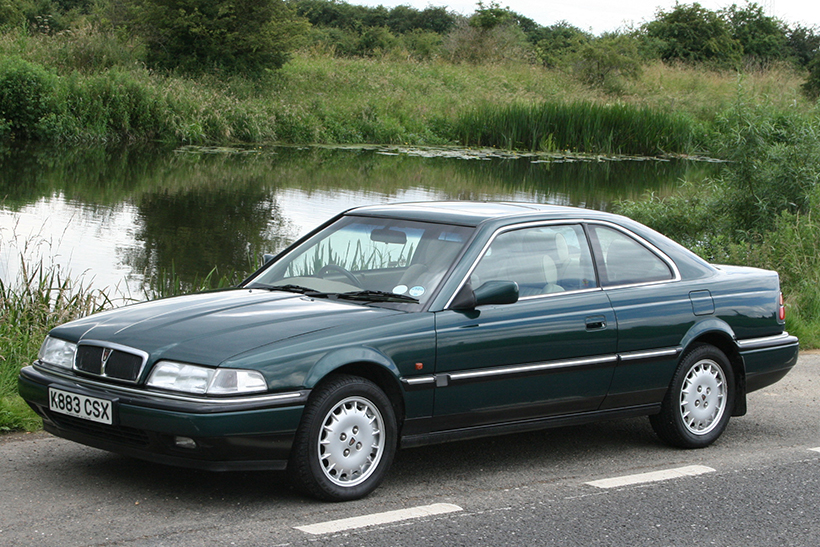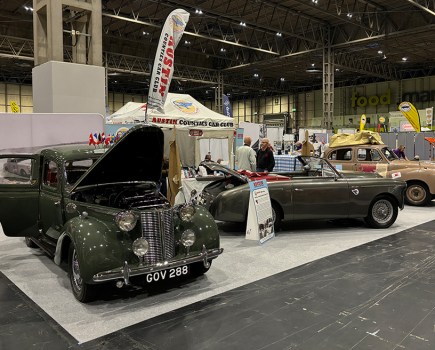Peter Simpson has some strong views on the scrappage scheme. Here’s why…
Scrappage is, for most of us classic car enthusiasts, a dirty term. There’s no doubt at all that – as I predicted at the time – the 2009 government scheme caused a few problems for the classic car movement. For starters, there’s the established classics lost to the scheme – several Morris Minors, various P4 and P6 Rovers, assorted MGBs and a few rarities including a PA Cresta, Triumph Mayflower, Riley Elf, several BMC Farinas and even, it’s rumoured, a Riley RM. Bear in mind, too, that in order to be accepted, all these had to be Mot’d at the time of trade-in.
The biggest impact, though, was on the numbers of cars lost which were becoming interesting at the time – the scrappage scheme in my view is responsible for so many 1985-95 cars now being much rarer than their sixties and seventies counterparts.
It’s also a complete misnomer to imagine that only rough cars were lost. Think about it. Scrappage grants were offered only against new cars. Potential new-car buyers aren’t generally the sort to run marginal bangers; most who happen to have a car old enough for scrappage have owned it since it was new or nearly new. What’s more, someone who can afford to buy a new car – even with a scrappage discount – can also afford to maintain their old one properly.
Consequently, scrappage removes, with almost surgical precision, the very best old cars; the one owner/low mileage/well-maintained examples which wise classic enthusiasts seek out for long-term preservation. It doesn’t tackle the poorly-maintained twelve-owner bangers which there may be an environmental and/or safety case for getting off the road – few people who run these can afford a new car, even with the scrappage discount.
That 2009 scrappage scheme is the only official scheme so far. Similar-sounding schemes run since are all manufacture initiatives set up and entirely funded by the manufacturer concerned. They – or their dealers – are the ones providing the funding for the discounts, and it is therefore they who decide all the terms and conditions, including what happens to cars traded in under the scheme.
This means – despite what the manufacturers might claim – that there is no actual need for any car traded in under a current ‘scrappage’ scheme to be scrapped at all. The manufacturer can, if it chooses to, allow itself the flexibility to exclude classics. If it wants to cover itself, all it needs to do is include a clause in the small print ‘terms and conditions’ which hardly anyone ever reads anyway. Something like this perhaps? “While most vehicles traded in under the Bean Car Company’s scrappage scheme will be scrapped, the Bean Car Company reserves the right to resell complete and for continued road use any vehicle which, entirely at its discretion, it considers to be of historic interest by reason of its age, condition or any other factor.”
There you are – no-one trading a car under a manufacturer ‘scrappage’ scheme will be put off by that – in fact I’ll be surprised if many even read it – but with a clause like that included, manufacturers could easily remove from ‘scrappage’ any car which they wanted to.
There’s another aspect to all this too – something I was reminded of last weekend when, during a long weekend break on South Wales. I visited the (excellent, and free…) Swansea Museum of Technology in the docks development. Among the exhibits was a ‘Yr Glanaf’ electric car – Yr Glanaf is Welsh for ‘the cleanest’ by the way, and the Carephilly-designed and built car featured a wooden (Western Red Cedar) body, on the basis that wood is basically carbon-neutral and can be recycled to create energy at the end of its life, rather than using it.
The descriptive information sheet made for some very interesting reading. It pointed out the average car, over a 100,000 mile service life, created around 15 tonnes of Co2. Disturbing. However, it also pointed out that the car’s manufacturing process – before it had even turned a wheel under its own power – created 17 tonnes (Yr Danaf required, it was claimed, just 10% of that) – while scrapping it at the end of its service life creates a further seven tonnes. These figures are similar to those I’ve seen quoted by other independent sources.
So actually using a car is responsible for less than two fifths of a cars Co2 output. The overwhelming majority of whole life CO2 output results from manufacture and end of life disposal! This puts a very different slant on the environmental case for scrapping something that’s still perfectly serviceable and replacing it with a newly-built car which may be slightly less polluting in use. A premature or unnecessary extra manufacture/disposal more than outweighs any reduction in output during use.
I’m actually quite keen to do all I can to preserve life on the planet we live on – and I’m certainly no climate change denier. Quite the reverse in fact. However, to me, it’s clear that the most environmentally-friendly way of running a car is to buy one that’s been built to last – new or secondhand – and then look after it, so that it’s as efficient as possible in use but lasts as long as possible…








